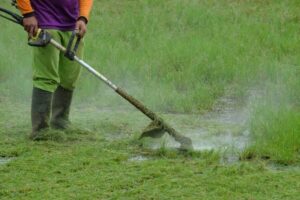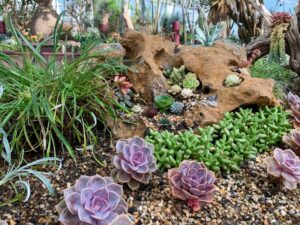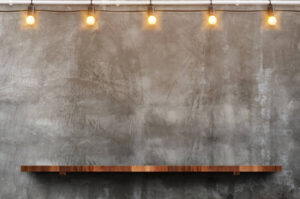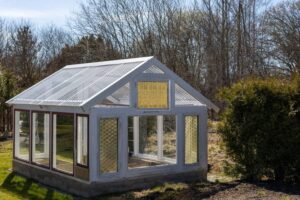If you feel like the grass is always greener on the other side, maybe a grass lawn is not for you. You probably can’t handle grass because it’s time-consuming, expensive, and exhausting, even more so when you don’t have the right soil and you’re living in a tough climate.
Don’t worry if you’re not ready to invest in a traditional lawn, because many alternative approaches are easier to maintain and don’t involve the turf.
Here are some creative grass-free ideas that are cheap, and sustainable, plus they are going to enhance the aspect of your garden.
1. A rock garden
Remember the pet rocks in your childhood? Let’s channel this nostalgia and create a fancy rock garden as adults. Our specialists suggest that rock gardens are amazing for yards with rocky terrain or poor soil quality. Find rocks in different shapes and sizes and combine them with plants such as sedums and alpines.
Rock gardens create a striking visual impact, require minimal watering, and thrive in difficult conditions. Whether you choose to add plants or let the rocks stand alone, this is a hardscape that will significantly enhance your garden.
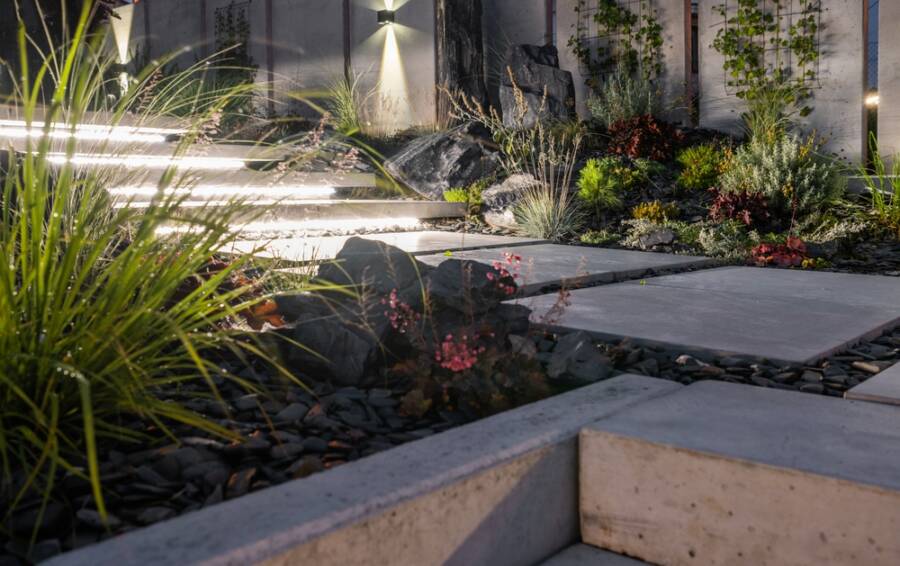
2. Synthetic lawn
Synthetic lawns can be a good solution when you want a lush appearance without upkeep. Modern artificial turf looks almost identical to natural grass. Synthetic lawns reduce the time and energy needed for maintenance. It’s also sustainable since you don’t need fertilizer, water, or pesticides.
Another valuable fact is that artificial lawns are a viable option for terraces and balconies if you want to create a cozy space. For landscaping or outdoor spaces, we advise you to consider synthetic grass as a practical and aesthetic alternative.
3. Wildflowers
If you want a beautiful and low-maintenance yard, consider planting wildflowers. They are easy to care for, and the most interesting fact is that they are self-seeding. This is an amazing alternative that will bring you a lot of joy, and they will hit you with their freedom vibe and wild scent. Moreover, a yard full of them attracts pollinators, and you will have a natural habitat for small creatures and a healthy place for grass if you decide to add it at some point. You should begin planting them in the autumn to make it as easy as possible.
One of our specialists shared that she replaced the grass recently with a wild garden, and she is more than happy about its vibrant wild blooms. Consider sowing wildflowers if you want a beautiful and low-maintenance yard. Planting wildflowers is simple, especially if you begin in the fall. The process she did was solarize large sections of her yard to reduce the grass and seed the wildflowers in the field. With the grass gone, she sowed the wildflower seeds that germinated and thrived in her landscape by the spring.
4. Clover plants
If you want your ground to be covered in plants, opt for low-maintenance ones that live close to the ground. The perfect choice is clovers; gardeners are describing them as creating a botanical tapestry of various dimensions, shapes, and colors. You can include creeping Jenny, thyme, or vinca minor. These plants take some time to spread, but when they do, they take control of the weed growth and stabilize the soil. This is how they bring rational purpose and beauty to your garden.
5. Pavers and stones
If you are a fan of the dried dessert look, don’t hesitate to use pavers and stones to enhance your garden. Some pavers can be expensive, but you can find a lot of locals offering free removal of pavers and stones. And this should be your goldmine of free landscaping material.
Bring a truck and put some effort into finding the best deals on Craiglist or even Facebook Marketplace. With their versatility and endurance, they will offer you the possibility to create pathways and maximize access to different parts of your yard by adding stones in between.
6. A succulent garden
If you want to complement your hardscape, you can use low-maintenance options to boost the aesthetics. Create a succulent garden!
You can build a rock border near the curb and plant sculptural plants like agave or yucca. Cacti or succulents will be perfect for sunny sports, and they can be a stylish alternative to traditional grass.

7. Did you think about mulch?
Mulch can be used to enhance parts of your yard. As an alternative to grass, you can add pine bark or needles. Our specialists recommend using mulch around tree bases, in play areas, and in planting beds. Mulch will create a visually appealing limit, and it has oracular benefits. Mulch retains moisture and suppresses weeds. The soil’s health will be improved, and it’s going to have an overall tidy appearance. Moreover, when it enters the decomposing process, more and more benefits are released into the soil.
8. Edible garden
An edible is the most rewarding alternative to the time-consuming grass lawn that demands mowing, trimming, aerating, and fertilizing. Of course, growing herbs and vegetables also requires effort, but it comes with the benefit of having your own fresh products just outside when you want to prepare a soup, which is well worth it.
Your herb garden can contain rosemary, basil, mint, or other ingredients that will bring delightful fragrances to your garden. And if you don’t choose the aromas and you go for planting rows of vegetables and tomatoes, they will keep you and even your neighbors fed for the whole summer, and why not? Maybe they will give you a hand in taking care of them too.
9. Water feature
To create a hardscape, you can incorporate water features such as fountains, a small pond, or a bird bath. They will create the needed focal point, attract wildlife, and offer a sense of tranquility to your garden.
10. Xeriscaping
This is a landscaping approach that’s designed to eliminate the need for irrigation or reduce it. It’s ideal for prone-to-drought areas and for those looking to conserve water. There are some key components when it comes to xeriscaping.
First, evaluate the conditions in your garden, such as soil type, vegetation, and sun exposure. Design the landscape to be water-effective by grouping plants with similar water needs together. Incorporate patios, pathways, and other elements that don’t require water. Analyze the soil and improve its structure and fertility by adding compost to increase water retention. The most important thing to do is to use a drip irrigation system that deludes water to the root zone in moments such as early morning or late evening. This will reduce runoff and evaporation. You can find this Drip Irrigation System on Amazon; you can install it by yourself and make your life easier.
What’s different from traditional landscaping is the significant water reduction. You will have lower bills, reduce the need for fertilizer or other substances for maintenance, have a lot of biodiversity, and minimize the carbon footprint related to garden maintenance. All this has an amazing aesthetic appeal. You will end up with a visually striking landscape with diverse textures, forms, and colors.
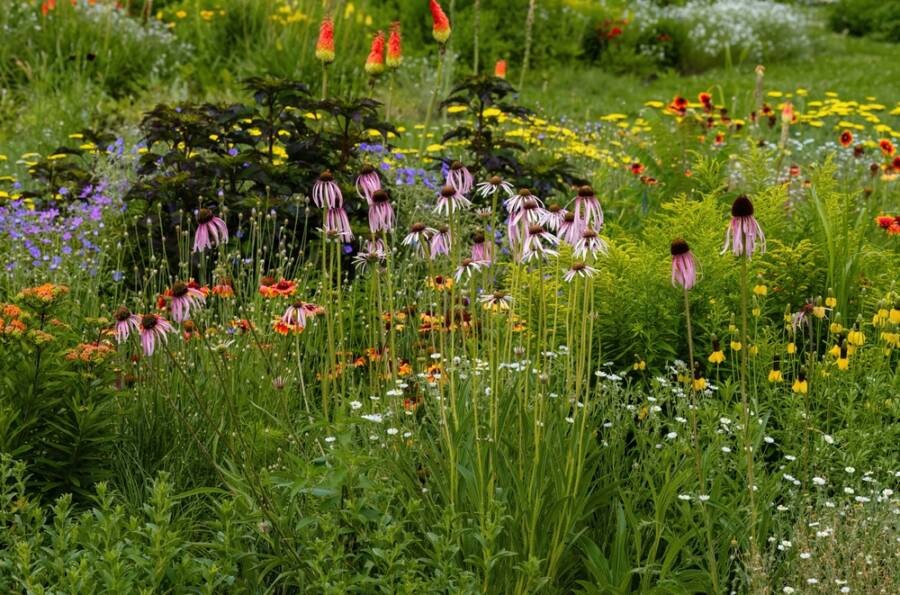
If you liked our article, you can read this one next: 5 Hacks to Upgrade Your Space Without ANY New Items!



